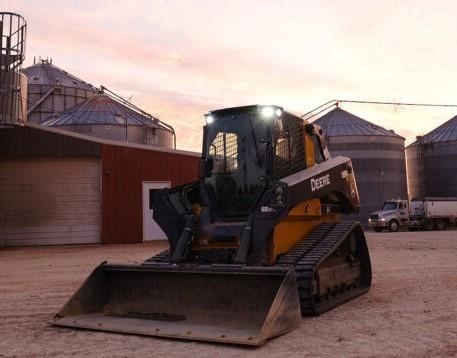As an agricultural producer, you know how important it is to protect what you grow in order to reap all of its benefits. In order to protect stored grain, for example, it must be kept dry over time, meaning farmers must continuously monitor moisture levels to ensure quality. Let’s take a closer look at what goes into keeping grain in optimal condition.

How Are Grains Stored and Protected?
Grains are typically stored in cylindrical structures with ample ventilation. This ventilation is essential to keep grain cool during the warmer months to prevent insect infestations and mold growth. Temperatures below 50 degrees Fahrenheit can significantly hinder the opportunity for insects to thrive. Farmers should also keep an eye on the roof of their grain-containing structure and remove any condensation before the moisture becomes problematic.
5 Tips to Keep Gain Cool and Dry During the Summer
The summer months can be challenging for agricultural producers who need to keep their grain cool and dry throughout the season. However, there are a few factors they can focus on to maintain its quality. Moisture and ventilation are two critical components, but knowing what to look for while routinely checking grain is just as essential.
Bin Roof Ventilation
The bin roof naturally heats the air above the grain when it heats up during the summer. Natural ventilation can cool this space, assuming the bin has openings near its eaves and peak. Keep in mind that these openings need to be large enough to allow an ample amount of heated air to escape the grain container.
Use Positive-Pressure Aeration
Aeration fans can be used, assuming they are covered to prevent a chimney effect from developing — this can warm the grain. Operating an aeration fan every three weeks during the cooler, morning hours can reduce the temperature of the grain in the upper portion of the bin. Positive-pressure aeration pushes air up through the grain, allowing the cooler grain at the bottom to reduce the air temperature.
Safely Check Your Grain
The summer months may come with periods of extreme temperature fluctuation. That being said, it is important to safely check your grain at least once per week. Before entering a grain bin, make sure you have your safety harness and a partner with you to help. Turn off all of your unloading equipment, and be sure to protect your lungs by wearing a mask.
Remove Spoiled Grain
If you visually see or smell something unusual while inspecting your grain, start using your aeration fans immediately to usher in fresh air. In the event that you observe grain crusting, blending it off can help resolve the issue. Keep in mind that if you cannot get it under control, however, you will need to move your remaining grain to a new bin.
Monitor Grain Storage Time
The storage life of your grain will be dependent on its moisture content and temperature. Every time the grain temperature increases 10 degrees, the allowable storage time (AST) decreases by half. The AST can increase by up to 75 percent for each percentage point reduction in grain moisture content.
Click here to see more...